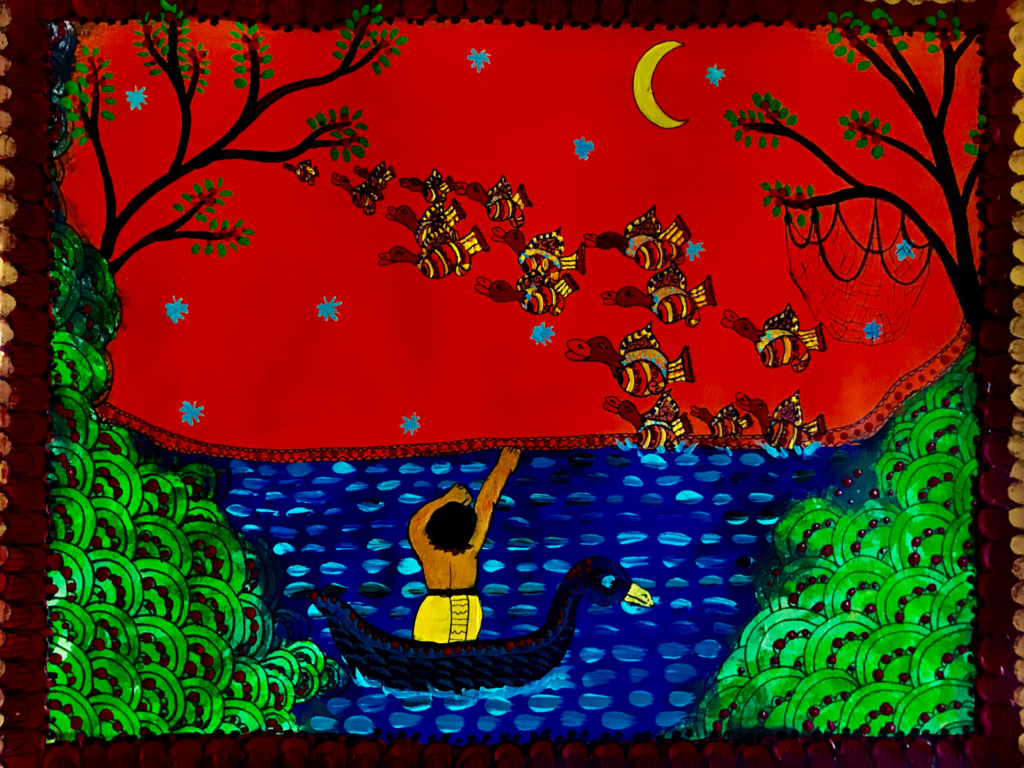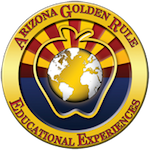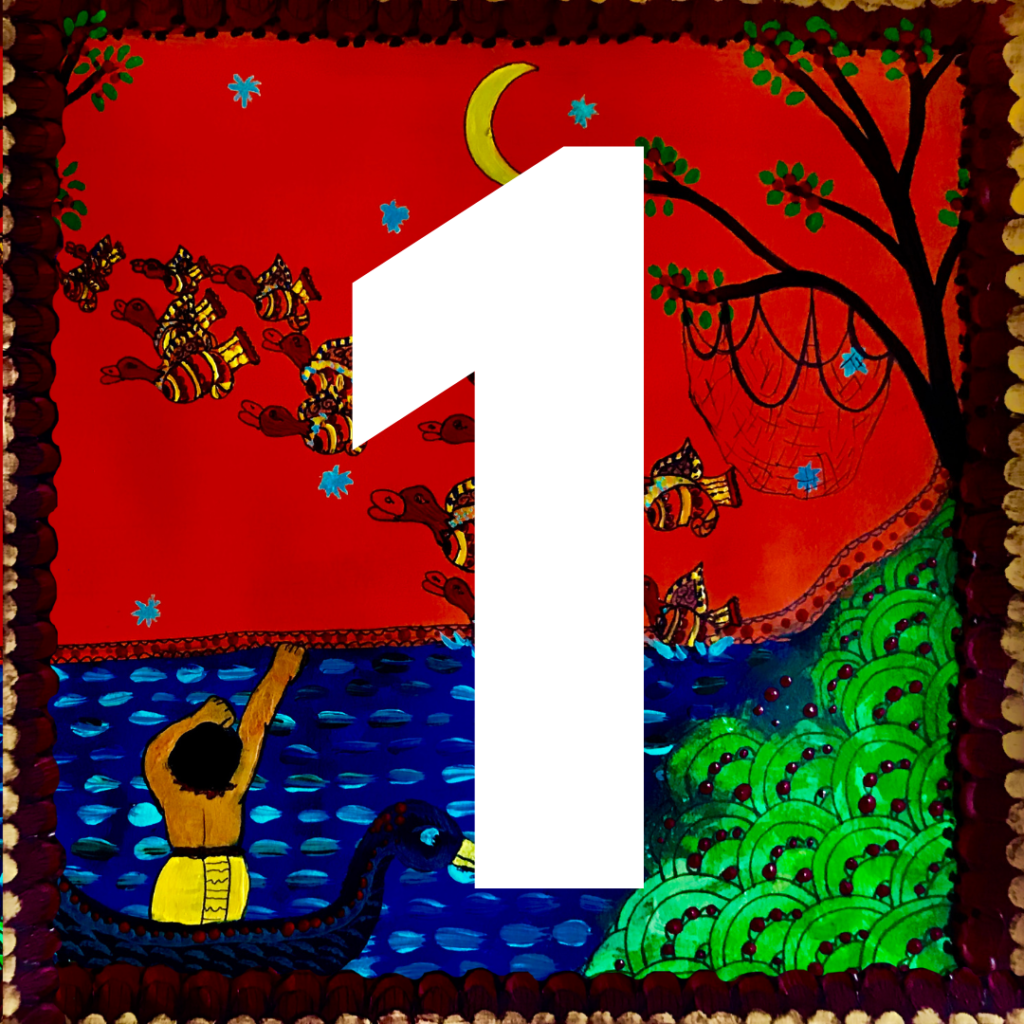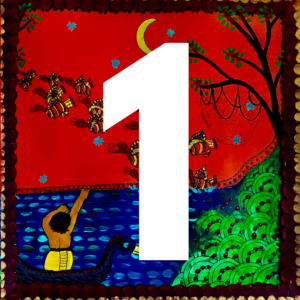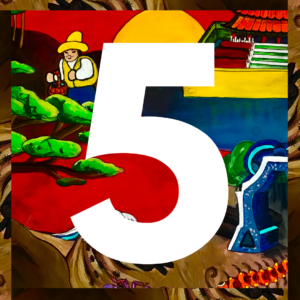“Stars Shine Brightly” is an arts resource, complete with world folk tales and original music, developed for grade levels K-5. Activities are for the classroom and include: Storytelling, Music, Dance, Theater, and Visual Art. “Stars Shine Brightly” is aligned with Arizona educational standards in ELA, World/Language, Arts; and Socio-Emotional competencies.

First Grade Teacher Guides: Below are five sequential First Grade cultural activities in Storytelling, Music, Theater, Dance, and Visual Art. Each activity begins with a group discussion (Prospecting for Gold) and ends with a class challenge (Golden Rule Challenge). As you use this resource in the classroom, your students will deepen their understanding of the Golden Rule, “Treating others the way they want to be treated,” through the life guiding principles of Kindness, Empathy, Respect, and Civility.
Arts Experience #1
Storytelling
AZ PO Strands
1.SL.1, 1.C1.1, COM.N.1
Golden Rule Focus
Students will practice kindness by saying thank you and helping others in return.
Objectives
Speaking/Listening (1.SL.1) Participate in collaborative conversations with diverse partners and in small and larger groups. Follow agreed‐upon rules for discussions.
Civics (1.C1.1) Apply value of respect, responsibility, and fairness in their own actions as they think about how someone else may feel.
Communities (COM.N.1) Recognize a few familiar words or phrases.
Materials
AGREE Resources:
“The Hunter and the Ducks” Resource, “danya vad” Audio Resource (on this page), Civil Discussion
Prospecting for Gold Consider rewarding students for their Golden Rule efforts by creating a jar for “gold nuggets” with a promised reward for filling it up.
BEFORE YOU BEGIN…
Establish Civil Discussion in your classroom. The Civil Discussion guide uses the Golden Rule as an agreed upon standard of conduct that can be used to discuss a variety of topics (aligned with AZ State standard 1.SL.1-1.SL.5). To begin each Art Experience, use Civil Discussion guidelines while holding class discussions (“Prospecting for Gold”).
Prospecting for Gold: What does it mean to ‘live’ the Golden Rule?
Golden Rule Activity:
- “It’s time for a Golden Rule Experience! (Prospecting for Gold) What does it mean to ‘live’ the Golden Rule?“
- Explain to students that this activity will help them see what the Golden Rule looks like, sounds like, and feels like.
- Ask the following questions about being new to a school.
- What does it feel like being new at a school and you walked into a cafeteria for the first time?
- If you didn’t know anyone, what would you want someone to do for you?
- How would you want to be treated?”
- As a class generate answers (e.g., say hello, invitation to play) then select two students. Have them stand in front of the class. Ask one student how they would want to be treated in that situation.
- After they answer, say, “The Golden Rule is ‘Treat others the way that you want to be treated.‘” Inform the second student to act like they are new to the school (e.g., walk into the class, holding books, looking nervous) and ask the first student to “treat” the second student to the Golden Rule (e.g., say hello, help them find a seat, ask questions).
- Repeat the activity in small groups. Have each group create a situation and show what the Golden Rule might look like in that situation. How would they want to be treated? Here are some potential situations:
- You leave your backpack at home with all your school supplies
- You are having a really bad day
- It’s your birthday and you are really excited
- There aren’t enough donuts for everyone in the class
- Invite groups to show what the Golden Rule looks like by acting out their scenario and demonstrating how they would like to be treated.
- Remind your students that the Golden Rule is a guiding principle in your classroom and that you will be encouraging them to live it. For additional practice living the Golden Rule, use the Golden Rule Compass & Puzzle.
Telling the Story:
- “It is important to acknowledge when people are being kind.” With your students, list kind acts that people can do for each other. “When someone is kind, we can respond by saying thank you.”
- “We are going to read a story that is set in India. In India they speak Hindi. In Hindi, this is how to say thank you: danya vad. (Use “danya vad” Audio Resource on this page for pronunciation). Invite them to practice saying it several times. Have them say it to their neighbors.
- “The story is about a team or flock of ducks. There is one duck, Wise Duck, that knows a few things that the younger ducks do not know. Listen as Wise Duck helps the young ducks. By helping, Wise Duck is being kind. ‘Danya vad’ Wise Duck!”
- Read aloud or play the story using “The Hunter and the Ducks” Resource. Encourage students to participate while the story is being read, by:
- Flapping their wings every time the ducks fly in the story
- Saying “danya vad” anytime Wise Duck helps.
- “What would have happened if Wise Duck didn’t help?” As a class, discuss the possible outcomes (e.g., the ducks would have been caught, the ducks wouldn’t have a plan).
- Write the Golden Rule Challenge on the whiteboard or print to post and display it somewhere visible in the classroom. Read the Golden Rule Challenge as a class, “When someone helps me, I will appreciate their kindness by saying thank you and do kind things too.”
Golden Rule Challenge: When someone helps me, I will appreciate their kindness by saying thank you and do kind things too.
Arts Experience #2
Music
AZ PO Strand
1.MU.CR.1b, 1.RL.3, 1.SL.1
Golden Rule Focus
Students will consider the importance of listening to “time keepers” in their lives (people who help them use time wisely).
Objectives
Music Creating (1.MU.CR.1b) With appropriate guidance, explore musical features (e.g., movement, vocalizations, musical instrument accompaniments).
Reading Literature (1.RL.3) Describe the characters, the settings, and major events in a story, using key details.
Speaking/Listening (1.SL.1) Participate in collaborative conversations with agreed‐upon rules for discussions.
Prospecting for Gold: How do you like to help other people? What are some ways other people have helped you?
Singing the Song:
- “It’s time for a Golden Rule Experience! (Prospecting for Gold) How do you like to help other people? What are some ways other people have helped you?“
- As a class, take turns retelling the story of the “Hunter and the Ducks.” Help your students identify key details about the setting and characters:
- Who are the characters in the story?
- Where are they at?
- What did they do?
- Why did they make those choices?
- Preface the song, “We will now be learning a song about this story. In this song, Wise Duck will share the advice she gave the young ducks. This song was created here in Arizona, imitating the Carnatic musical styles from India.” Play the beginning of the song for your students.
- “As we learn this song, we will need to learn how to keep the time. This clapping pattern is also from the Carnatic musical practices of India.”
- Teach the time-keeping clapping pattern (“Time Keeping” Video Resource).
- Part 1: Clap the palms of your hands together, then turn the right hand so the back of the hand is touching the left palm, repeat (4 counts).
- Part 2: Clap the palms of your hands together, then touch the left palm with your right-hand fingers in this order: pointer finger, middle finger, and ring finger (4 counts).
- Repeat Part I and Part II continually during the verses of the song.
- “We will now practice keeping time while listening to what Wise Duck has to say.” Play the song (“Listen Closely” Music Resources). Help your students begin “keeping time” as the music begins.
- After listening to the song, ask, “While you were focusing on keeping time with your hands, did you hear the advice given by the Wise Duck? What did Wise Duck say?”
- Answers: “Listen closely…hunter coming… must be careful…work together…time is keeping your behavior.”
- Listen to the song again, this time invite your students to repeat back what Wise Duck says. With practice, students will learn to keep time and sing the song at the same time (call and response).
- “In the song, it says ‘time is keeping’. Timekeepers are people who help us get things done and be where we need to be.” Ask the following questions:
- Who are the timekeepers in your life? (Teachers, parents, older siblings, etc.)
- Why are these people important?” (E.g., get us to school, help us know what to do, keep us safe)
- Write the Golden Rule Challenge on the whiteboard or print to display it somewhere visible in your class. Read the Golden Rule Challenge as a class, “I will practice listening closely to the people who are timekeepers for me.“
Golden Rule Challenge: I will practice listening closely to the people who are timekeepers for me.
Arts Experience #3
Theater
AZ PO Strand
1.T.CR.3a, 1.RL.9, COM.N.1, 1.SL.1
Golden Rule Focus
Students will discuss and share insights about the importance of thinking before they speak or act.
Objectives
Theater Creating (1.T.CR.3a) Collaborate in the adaptation of the plot in a guided theatrical experience (e.g., process drama, story drama, creative drama).
Reading Literature (1.RL.9) Compare and contrast the adventures and experiences of characters in stories.
Communities (COM.N.1) Recognize a few familiar words or phrases.
Speaking/Listening (1.SL.1) Participate in collaborative conversations with agreed‐upon rules for discussions.
Materials
AGREE Resources:
“The Ducks Work Together” Reading Resource, “samajdar” Audio Resource, “shantra hall” Audio Resource (on this page, for use in the script)
Prospecting for Gold: Why is it important to listen to the timekeepers in your life?
Reading the Script:
- “It’s time for a Golden Rule Experience! (Prospecting for Gold) Why is it important to listen to the timekeepers in your life?“
- Pass out printed scripts or project “The Ducks Work Together” Reading Resource for your students to read along. Read the script to your class or assign strong readers for the different character parts.
- After reading the script (don’t read “The Big Problem”), ask, “If you could change anything in this script, what would you change?”
- Add the suggestion, “One thing I would change is having the ducks listen and consider what Wise Duck had to say.”
- Write “samajdar” on the board and say, “This is a word in Hindi, it means being wise.” Say the word (“samajdar” Audio Resource on this page) and have your students repeat several times.
- “Part of being wise is listening and thinking before we act. Wise Duck is an example of ‘samajdar’. Who else do you know that is wise or ‘samajdar’?” (e.g., my relative, my animal, my friend)
- Return to the script and read the “Big Problem” to your class. As a class, discuss how the class thinks the ducks should respond to this problem and why.
- Teacher choice to use Civil Discussion guidelines, including a discussion leader (teacher), time keeper, and note taker.
- During the discussion, praise students who are being “samajdar,” listening and thinking before they speak (e.g., I noticed how you considered what they said). As a class, consolidate all the ideas and create a solution to the Big Problem.
- Congratulate your class on working together as a team to solve the problem! “That requires listening to each other and being helpful.”
- Write the Golden Rule Challenge on the whiteboard or print to display it somewhere visible in your class. Read the Golden Rule Challenge as a class, “I can be wise and helpful in my class by listening and thinking before I speak.“
Golden Rule Challenge: I can be wise and helpful in my class by listening and thinking before I speak.
Arts Experience #4
Dance
AZ PO Strand
1.D.CR.1a, COM.N.1, 1.SL.1
Golden Rule Focus
Students will learn about calming their minds, slowing their breath and becoming peaceful in the classroom.
Objectives
Dance Creating (1.D.CR.1a) Move in a variety of special relationships and formations with other dancers, sharing and maintaining personal and general space.
Communities (COM.N.1) Recognize a few familiar words or phrases.
Speaking/Listening (1.SL.1) Participate in collaborative conversations with agreed‐upon rules for discussions.
Materials
AGREE Resources:
“Wise Duck Sun Salutation” Movement Video Resource, “Listen Closely” Resource, “Time Keeping” Video Resource
Prospecting for Gold: Have you practiced listening in your class? How has it helped?
Golden Rule Activity:
- “It’s time for a Golden Rule Experience! (Prospecting for Gold) Have you practiced listening in your class? How has it helped?“
- “Sometimes it can get very noisy around us. Today we will practice staying calm and being peaceful.”
- Invite one student to be an example by listening and staying calm. Explain the following:
- Things are going to get a little “quacky.”
- They will be several feet away from you (the teacher).
- They will sit crosslegged with their eyes closed.
- They will try to hear what you (the teacher) are saying.
- Instruct the other students that will be quacking and making it hard for the “wise student” to hear. Helpful tips:
- Remind students to maintain their inside voices.
- Create a gesture for you to signal the students (ducks) to begin and end their quacking.
- Once everyone is ready and the “wise student” is seated, signal to the other students to begin quacking.
- Once the students are quacking, repeat the following phrase several times, in calm, but confident voice “I have a reward for you for being wise and listening.”
- After you signal for the class members to stop quacking, ask the quiet student if they heard what you said.
- If they did hear you, have them share what they heard with the class and give them a reward for listening.
- If they didn’t, repeat the activity, inviting them to listen more closely.
- Say, “This is one reason why it is important to learn to become calm and listen, you may wish you had heard what was said.”
- Teacher’s choice to use the Breathing Cactus Video located on the Teacher Resource page to teach your student’s box breathing techniques.
Doing the Dance:
- “Now we will learn a sequence of movements called “Wise Duck’s Sun Salutation”. These movements are based on a practice that originated in India called Yoga. The movements can help us feel calm, slow down and feel peaceful. Slowing down and feeling peaceful can help us make positive decisions, even when surrounded by ‘loud quacking ducks.’”
- Have each student find their own space in the classroom, arm’s length from the nearest students. To learn this movement, guide your students by reading the steps below:
- “Stand with your feet together, arms hanging at the sides of the body. Now stretch your arms out to the sides and up to the sky in one continuous motion, hands reaching above your head, long.”
- “Now move your arms down out to the sides, continuing all the way down till you touch the ground in front of you in a forward bend or allowing your arms hang in front of your body.”
- “Place your hands on your shins and look forward moving your body up in a forward bend, keeping your back straight till you get halfway up, gazing at the horizon.”
- “Move hands from your shins back down to the ground and then reach you arms out to the sides and all the way up above your head, reaching to the sky, then bring your hands down in front of your heart, palm of hands together and take a deep breath in and out.”
- To see the movements performed by children and to help students prepare to sequence what they have learned with the music, watch “Wise Duck Sun Salutation” Video Resource.
- “Will will now do Wise Duck’s Sun Salutation to the music.” Review the following order of movements with your students:
- “First we will do one Wise Duck Sun Salutation.”
- “Second we will sit cross-legged and use our hands to keep time (clapping pattern they learned in Experience #2) (Time Keeping Video Resource).”
- “Third we will bring the palms of our hands together by our heart and breathe in and out slowly.”
- “Fourth we will keep time till the words “flying higher” and slowly stand up.”
- “Fifth We will do one Wise Duck Sun Salutation, finishing with our eyes closed and breathing in and out.”
- Practice with the music “Listen Closely” Resource, calling out the actions as outlined above.
- After they finish, help them notice how they feel by asking, “How does your body feel after doing these movements? How does the classroom feel as we all calmed down?”
- Write the Golden Rule Challenge on the whiteboard or print to post and display it somewhere visible in the classroom. Read the Golden Rule Challenge as a class, “When it is noisy in the classroom, I can stay calm and listen.“
Golden Rule Challenge: When it is noisy in the classroom, I can stay calm and listen.
Arts Experience #5
Visual Art
AZ PO Strand
VA.CR.2.1a, 1.SL.1
Golden Rule Focus
Students will reflect and discuss why it is important to work together both at home and school.
Objectives
Visual Art Creating (1.VA.CR.1a) Engage collaboratively (e.g., pairs, small groups, whole group) in exploration and imaginative play with materials (e.g., puppets, model towns, paper murals).
Speaking/Listening (1.SL.1) Participate in collaborative conversations with agreed‐upon rules for discussions.
Materials
AGREE Resources:
“Duck Puppets” Visual Print Resource, “Paisley Design” Print Resource
Additional Materials:
Copy paper, Pencils and pens, Coloring tools, Scissors, Popsicle sticks, Glue

Prospecting for Gold: Have you noticed students staying calm and listening in the classroom? How has it helped?
Creating the Art:
- “It’s time for a Golden Rule Experience! (Prospecting for Gold) Have you noticed students staying calm and listening in the classroom? How has it helped?“
- Provide each student with the paisley guide “Paisley Design” Print Resource and a blank piece of copy paper for drawing practice. Explain to your students “You will be practicing a special design from India, called a paisley. The Paisley design combines a teardrop shape with dots, stripes, flowers or leaves.” Draw or project an example of a paisley design on the board.
- Invite students to follow the paisley guide. They will:
- First: Trace and practice drawing paisley designs
- Second: Practice drawing their own designs on the blank piece of paper
- After practicing the paisley design, give each student a duck pattern “Duck Puppets” Print Resource. They will:
- First: Draw several paisley designs on the duck puppet body pieces with pencil, to allow for erasing.
- Second: Trace over the pencil drawings with pen.
- Third: Color the wings one solid color, either red, orange, purple or yellow.
- Fourth: Cut out the duck puppet body pieces and wings.
- Fifth: Fold the duck puppet body in half (non-colored sides touching) and glue a popsicle stick in between the sides, with the popsicle stick coming down from the center of the duck’s belly.
- Sixth: Fold the wing tabs down and glue the wings to each side of the duck puppet body.
- As a class, and once the glue is dry, lift the ducks up and down together. Try to get everyone flapping up and down together. Have your student’s repeat Wise Duck’s advice from the song, “Work together (up), stronger wiser (down). Listen closely (up), flying higher (down).”
- Write the Golden Rule Challenge on the whiteboard or print to post and display it somewhere visible in the classroom. Read the Golden Rule Challenge as a class, “We will work together to fly higher.“
Golden Rule Challenge: We will work together to fly higher.
Bulletin Board Idea: Make a large tree on a bulletin board and lake below. Place a net near the top. Feature the duck puppets made by each student and attach them to the lake using paper clips and thumbtacks. The duck puppets can be moved higher or lower, flying safely from the lake to the tree. This can be used to track progress of class goals and challenges to live the Golden Rule together.
